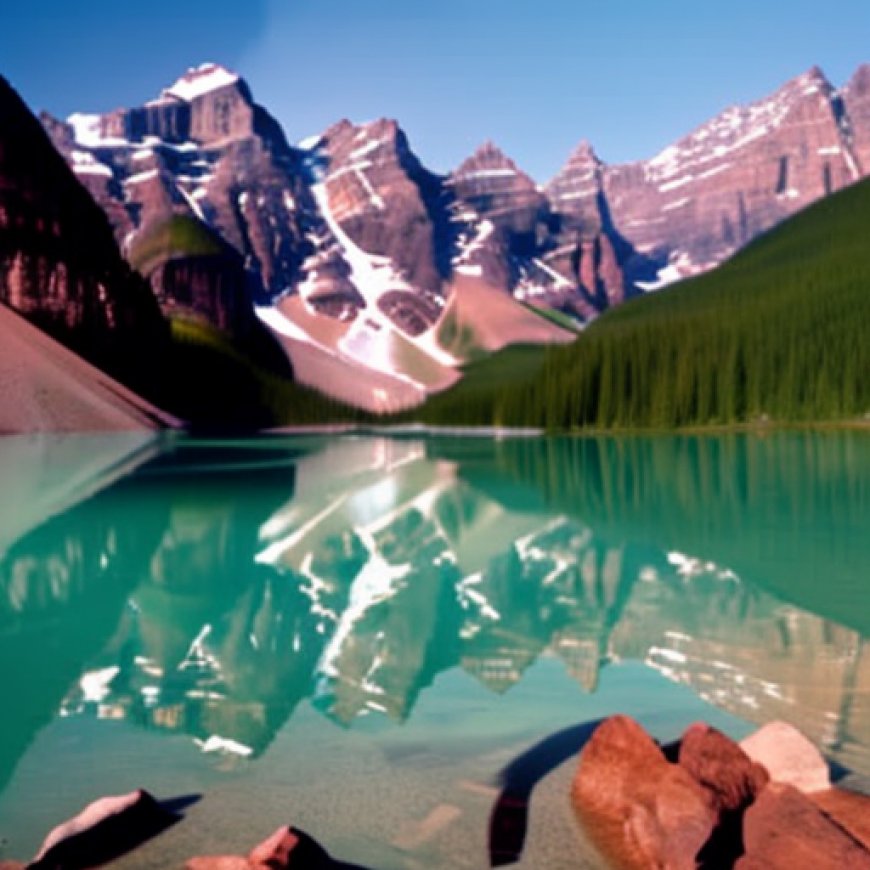Whirling disease leads to shutdown of lakes and streams in Yoho, Kootenay national parks
Whirling disease leads to shutdown of lakes and streams in Yoho ... Calgary Herald

To protect trout and salmon species and prevent the spread of whirling disease, Parks Canada has closed all access to shorelines and bodies of water in Kootenay and Yoho national parks. These restrictions will be in place until the end of March 2024, with the possibility of an extension.
Aquatic invasive species, including whirling disease, pose a significant threat to the health of national parks and vital aquatic ecosystems. These species disrupt and irreversibly damage aquatic ecosystems, particularly affecting vulnerable species at risk.
Parks Canada reported a suspected case of whirling disease in Yoho National Park’s Emerald Lake on September 20. This was the first reported case of the disease in British Columbia and led to the immediate closure of Emerald Lake, Peaceful Pond, Lone Duck Pond, and the Emerald River shorelines, waterbodies, and tributaries.
Further samples were tested in the Kicking Horse and Kootenay rivers, which revealed suspected cases of whirling disease in several locations.
Whirling disease is a parasitic aquatic disease that is fatal for some fish species. It does not pose a health risk to humans or other mammals. Affected fish may exhibit a “whirling swimming pattern” and show skeletal deformities on their bodies or heads. The disease can have mortality rates of up to 90% in some cases.
Whirling disease is spread through contact between finfish and a freshwater worm. It can spread downstream beyond park boundaries through interconnected river systems. Once spread, the disease is difficult to eradicate. Parks Canada is considering the option of completely eradicating fish species in affected waterbodies as a management tool.
Under Parks Canada’s restrictions, all in-water and shoreline activities in Kootenay and Yoho national parks are prohibited. This includes fishing, swimming, diving, and boating. Hiking, walking, or cycling within three meters of any waterbody is also restricted. The maximum penalty for not following these restrictions is a $25,000 fine under the Canada National Parks Act.
These measures are necessary to protect species at risk and preserve aquatic ecosystems in Kootenay and Yoho national parks. Parks Canada is working with partners and other jurisdictions to determine the best management tools for dealing with whirling disease.

Restrictions Implemented in Kootenay and Yoho National Parks to Protect Fish Species
Introduction
Threat to Aquatic Ecosystems
Suspected Case of Whirling Disease
What is Whirling Disease?
Spread and Eradication
Restrictions and Penalties
Conclusion
SDGs, Targets, and Indicators
| SDGs | Targets | Indicators |
|---|---|---|
| SDG 14: Life Below Water | Target 14.1: By 2025, prevent and significantly reduce marine pollution of all kinds, in particular from land-based activities, including marine debris and nutrient pollution | No specific indicators mentioned in the article |
| SDG 15: Life on Land | Target 15.1: By 2020, ensure the conservation, restoration and sustainable use of terrestrial and inland freshwater ecosystems and their services, in particular forests, wetlands, mountains and drylands, in line with obligations under international agreements | No specific indicators mentioned in the article |
1. Which SDGs are addressed or connected to the issues highlighted in the article?
The issues highlighted in the article are connected to SDG 14: Life Below Water and SDG 15: Life on Land.
2. What specific targets under those SDGs can be identified based on the article’s content?
The specific targets that can be identified based on the article’s content are:
- Target 14.1: By 2025, prevent and significantly reduce marine pollution of all kinds, in particular from land-based activities, including marine debris and nutrient pollution.
- Target 15.1: By 2020, ensure the conservation, restoration and sustainable use of terrestrial and inland freshwater ecosystems and their services, in particular forests, wetlands, mountains and drylands, in line with obligations under international agreements.
3. Are there any indicators mentioned or implied in the article that can be used to measure progress towards the identified targets?
No specific indicators are mentioned or implied in the article that can be used to measure progress towards the identified targets.
4. SDGs, Targets, and Indicators
| SDGs | Targets | Indicators |
|---|---|---|
| SDG 14: Life Below Water | Target 14.1: By 2025, prevent and significantly reduce marine pollution of all kinds, in particular from land-based activities, including marine debris and nutrient pollution | No specific indicators mentioned in the article |
| SDG 15: Life on Land | Target 15.1: By 2020, ensure the conservation, restoration and sustainable use of terrestrial and inland freshwater ecosystems and their services, in particular forests, wetlands, mountains and drylands, in line with obligations under international agreements | No specific indicators mentioned in the article |
Behold! This splendid article springs forth from the wellspring of knowledge, shaped by a wondrous proprietary AI technology that delved into a vast ocean of data, illuminating the path towards the Sustainable Development Goals. Remember that all rights are reserved by SDG Investors LLC, empowering us to champion progress together.
Source: calgaryherald.com

Join us, as fellow seekers of change, on a transformative journey at https://sdgtalks.ai/welcome, where you can become a member and actively contribute to shaping a brighter future.







